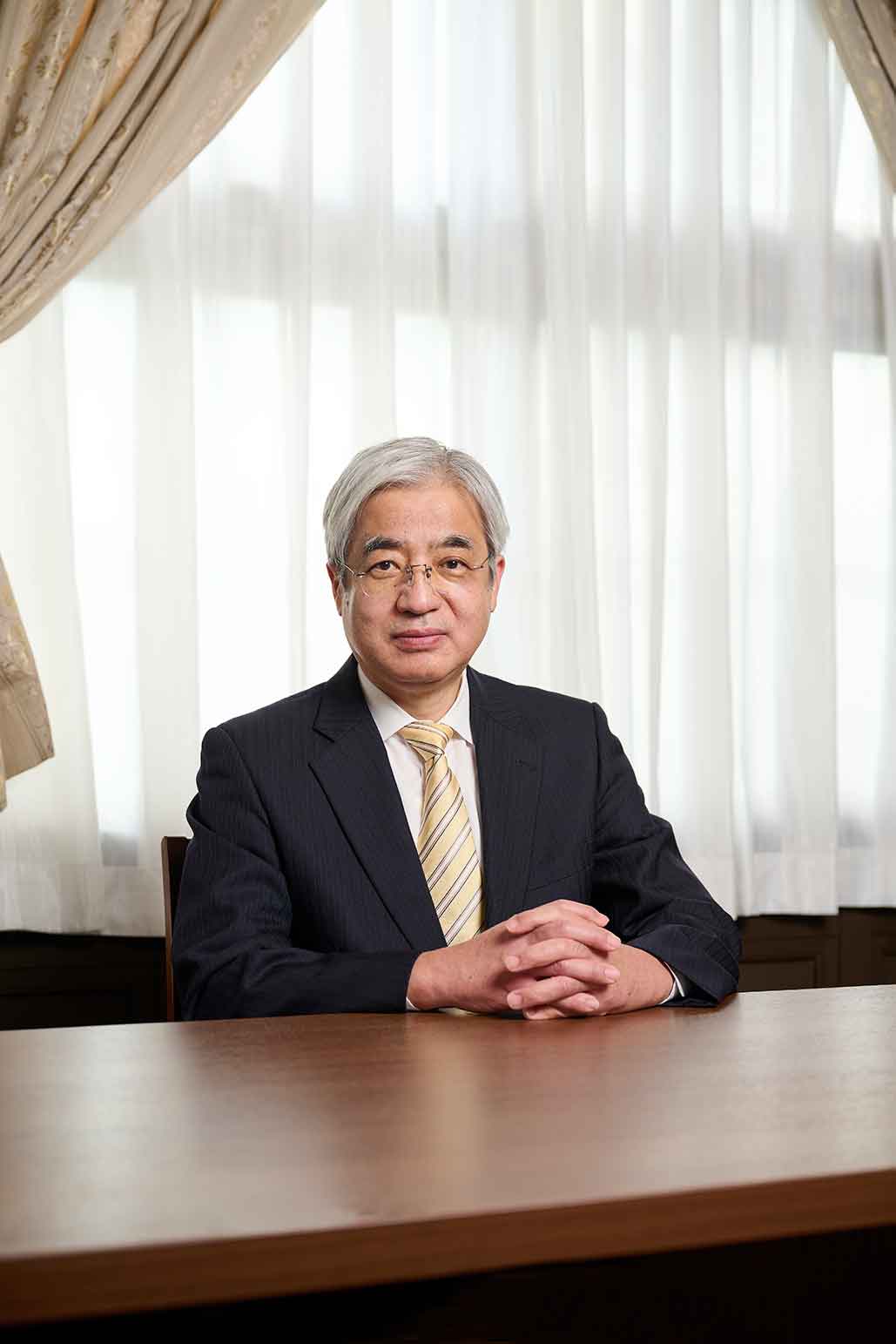A Message from Our President

President:Masahiro YOSHIMOTO
Whether exploring new horizons or delving deeper into research, significant discoveries are inevitable. Kyoto Institute of Technology boasts a rich academic heritage deeply rooted in the cultural essence of Kyoto, shaped by the legacies of our forerunner institutions: Kyoto College of Technology (est. 1902) and the Kyoto College of Textile Fiber (est. 1899). Our institution has contributed significantly to academia, arts, culture, and industry, fostering individuals dedicated to the pursuit of knowledge, aesthetics, and applied art.
The ethos of Kyoto culture and society thrives on the fusion of technical mastery and networks of trust. Over many generations, the people of Kyoto have demonstrated an unwavering commitment to refining every aspect of their life and culture to the utmost. Beyond upholding tradition, Kyoto embraces innovative challenges, endeavoring to pioneer new values. We term this spirit, Kyoto Thinking, and welcome it as a driving mindset in our education and research, nurturing individuals poised to shape the future of Japan and the world.
The KIT vision extends beyond the production of technicians to the cultivation of interculturally-aware leaders in engineering and technology. Our graduates, adept at confidently navigating challenges, demonstrate exemplary leadership qualities. We use the term, “Tech Leader” to describe the profile of four competencies— technical expertise, experience-based leadership skills, second language proficiency and personal awareness— that they master. The design of our comprehensive undergraduate-through-PhD curriculum ensures the effective acquisition of these competencies.
Addressing global challenges demands a holistic approach, combining not only natural sciences but also humanities and social sciences—what we term “Integrated Knowledge.” At KIT, faculty members across diverse fields adopt a transdisciplinary approach to challenges. Engagement in interdisciplinary projects not only enriches the academic areas involved, but also infuses ongoing research with newfound significance, unveiling new ways its implementation may serve us. Whether we are exploring new horizons or delving deeper into research, meaningful discoveries are bound to emerge.
Furthermore, addressing today’s global challenges necessitates collaboration beyond the confines of our institution: the forging of partnerships with other universities, research institutions, and industry—domestic and international. Particularly in the realm of industry-academia partnerships, we are currently engaged in advanced and innovative research to address societal issues at a scale that cannot be achieved by individual companies or universities alone. To accomplish this, we are leveraging the collaborative foundation we have established over time with a number of companies and universities.
The joy derived from the pursuit of truth is the driving force of academia. We find the pleasure of creating new value propels engineering forward. Through mutual recognition, careful communication and collaboration, we find joy in shared successes, realizing dreams and aspirations. Acknowledging each other’s contributions leads to the discovery of solutions and shared satisfaction—a joy intertwined with dreams and hopes for a better future. With our unwavering commitment to the value creation which society demands and to providing what is needed in realizing the aspirations of many, Kyoto Institute of Technology will continue to embrace challenges, striving for excellence in education, research, and societal impact.
April 1, 2024
Masahiro Yoshimoto
President

